#they usually fly with one AWACS at a time
Explore tagged Tumblr posts
Text
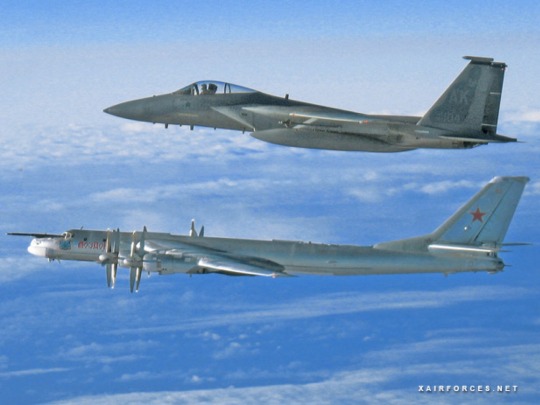
Smoking in the Boompod
In May of 1989, I went on a 6-week Temporary Duty Assignment (TDY) to the Alaska Tanker Task Force (ATTF) at Eielson AFB, Fairbanks Alaska in a KC-135 A model. At Loring, we were converting over to the luxurious “R” model.
Crew R-121 was a young crew. The Aircraft Commander (AC) had recently arrived at Loring having been a T-37 First Assignment Instructor Pilot (FAIP.) Our Co-Pilot was the most experienced crew member and a bit of a prankster. Our Navigator was a great guy and navigator but was still relatively young hours wise. The Boom Operator, yours truly, was just an A1C with less than 200 flying hours. But we had flown together for a little while, were all eager to prove ourselves, and we were in general a good crew.
The Soviets would fly their Bear bombers south along the East Coast to Cuba and Loring AFB provided Strip Alert tankers to the Strip Alert fighters, usually F-15s from Loring or Westover. If you did one of these missions, you got this patch, and your name was put on a plaque with a bear's head mounted to it.
A couple of weeks after arriving in Alaska, we launched on Strip Alert for a Bear bomber flying along the west coast. After the launch, the AWACs had instructed us to remain about 7 miles behind the Bear bomber because they had been dazzling (aiming lasers) at USAF pilots, but the AC wanted to get a closer look.
Now, I was a smoker. They had stopped allowing smoking in the aircraft just before I went through training at Castle. The Air Force had an extensive No Smoking policy. The AC was an avid nonsmoker as well. I could get on in after finishing the pre-flight, if there was time, and then normally, I’d have to wait until the flight was over. For this flight though, we were away from home, with nobody watching, so I figured I could chance one in the boompod.
There were two little holes at the bottom of the boom pod (to drain water, or whatever) that were covered by a rubber flap. If you pulled the flap back, the pressurized aircraft would blow air out of the holes, like a small leak. If you put the cigarette near it or exhaled towards it, the smoke would get sucked right. However, it was not enough to stop you from smelling like smoke. I didn’t smoke during the air refueling, just before or after.
A couple of minutes after we had finished topping off one of the F-15s, the AC called me on the interphone saying I might want to come up and look. He had bumped up the throttles just a bit so we would catch up the bomber without the AWACs noticing. We’d been inching up over the last five or ten minutes and were just about even with them and off to one side. Maybe two miles away at this point.
So I ran up front, poked my head up between the pilots to look out the windshield and at that exact moment my AC says, "You've been smoking in the back, haven't you!" He never missed anything and he always said something if he felt it was needed.
Busted!
Fortunately, at that time, AWACs called us up on the radio and told us to slow down. The AC was ‘Busted’ too.
We both got away with it.
Image from kl7air.us/history.htm
@Tcamp202 via X

5 notes
·
View notes
Text
AC Z/6/7 AU ft. the AWACS. A post-mission one-sided conversation. Adapting an incorrect quote thing.
AWACS Bandog: <<I. AM. SPEECHLESS!>>
Trigger (in narration mode, giving the biggest eyeroll possible): Even though Bandog said he was speechless, he proceeded to yell at us for 10 whole minutes.
Trigger: I thought Ghost Eye was gonna save us but...
AWACS Ghost Eye: <<You guys nearly got yourselves killed! I am ALSO speechless!>>
Trigger: But he was not. It was a double lecture all the way back to base. FML.
Trigger: Eagle eye gave us a few seconds of respite but that was only to tell the Galm team that he knew what they were up to and not to even think about switching radio frequencies. Fuck this is going to be a long flight.
#ace combat#incorrect ace combat#ace combat zero#ace combat 6#ace combat 7#in this#AU#they usually fly with one AWACS at a time#but for large scale destructions each team sticks with their own AWACS#and they usually get chewed out for doing inhumanly dangerous stuff#Trigger gets chewed out for flying as if he/she was drunk#Count too#Garuda gets it for flying into WMDs and escaping JUST. IN. TIME#Galm gets it for setting fire to everything a bit too well
36 notes
·
View notes
Text
Spy Planes & UAV’s Above Europe
✈️🌍 A Helpful Guide 🌎🛩
-
🛩Forte : RQ-4 Global Hawk

An UAV that has been a constant figure over the Black Sea and Eastern Ukraine since long before the war. People have been watching it consistently for at least a year. Nothing is certain in life, except death and Forte.
The RQ-4 Global Hawk is a high altitude and long endurance UAV that collects imagery intelligence (IMINT). (That means it takes pics📸).
It can fly for up to 30 hours in a single go and usually launches out of Sicily in the Mediterranean. Sometimes elsewhere.
-
🛩 Yank : The Guardrails
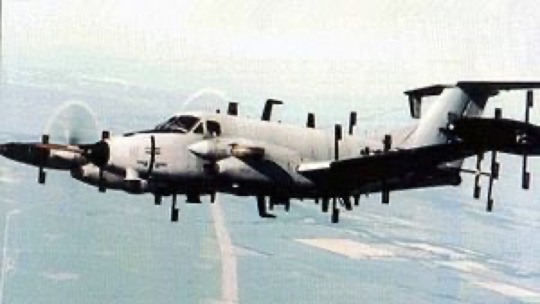
The Guardrails collect signals intelligence (SIGINT).📡 They usually fly in Lithuania just north of Kaliningrad and Belarus. They are modified Beechcraft.

Kinda goofy looking, but an endearing little spy plane nonetheless.
-
🛩 Jake/Homer (Occasionally Different Names) : The Rivet Joints

Unlike Forte and the Yankies, the Jakes and Homers pop up in a lot of places around Europe. It usually launches out of Mildenhall and I’ve seen it checking out Kaliningrad, Murmansk, and the Black Sea. One time Russia even released a missile at/near it, which made headlines.
When the Jakes and Homers check out Murmansk, they usually take a stratotanker with it. It also usually turns its transponder off when it gets up there.
Rivet Joints do a lot of things related to intelligence. Per Wikipedia: sensor suite allows the mission crew to detect, identify and geolocate signals throughout the electromagnetic spectrum.
The Jakes and Homers have a lot of diverse adventures, basically. And sometimes they’re not even called “Jake” or “Homer” at all!
-
🛩The Bombardier Challenger: aka Totally Not a Spyplane (It Is)
This is a sneaky one that can look like normal traffic unless you click on it and see its weird path. It usually stays near Moldova over Romania. Sometimes it does mix it up a bit and heads towards Belarus and Kaliningrad.
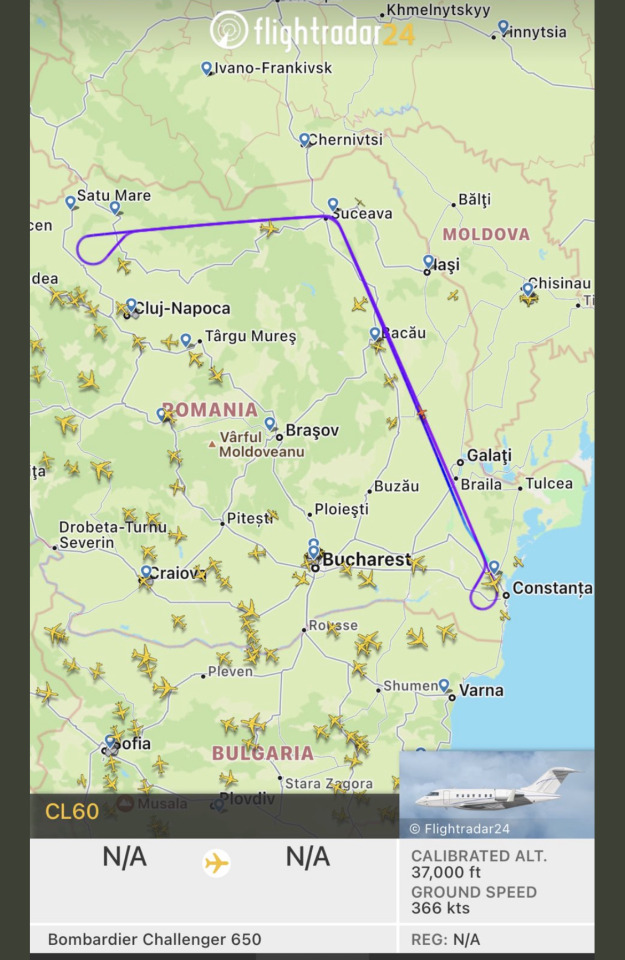
This is likely the one that has Aerial Reconnaissance and Targeting Exploitation Multi-Mission Intelligence System (ARTEMIS). But it’s mysterious so 🤷🏼
-
🛩NATO: The Sentry.
She has the best loops in the business!
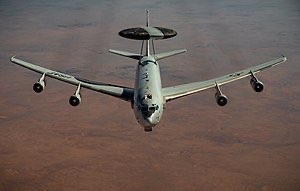
The Sentry is an AWACS (Airborne Warning and Control System). It does… everything. Weather surveillance, command, control, and communications, and so on. 📡
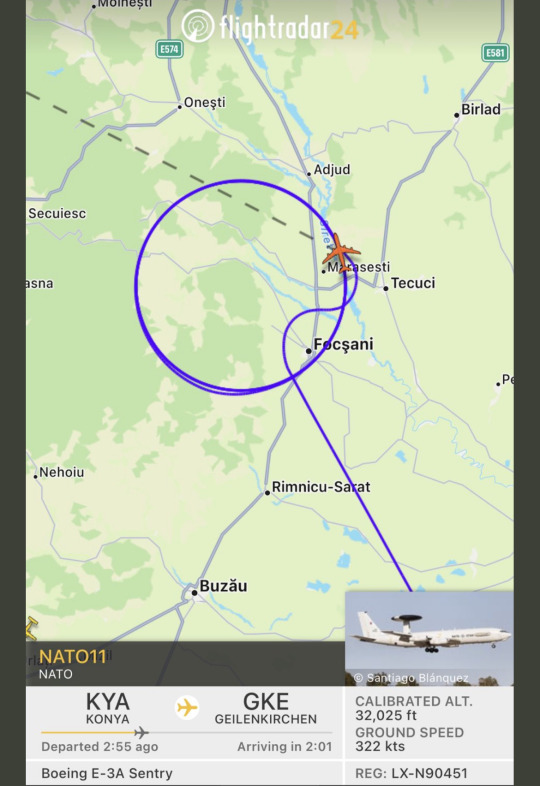
It usually circles over Romania coming from Konya. It does sometimes circle elsewhere.
-
🛩The Swedish Air Force Gulf Streams
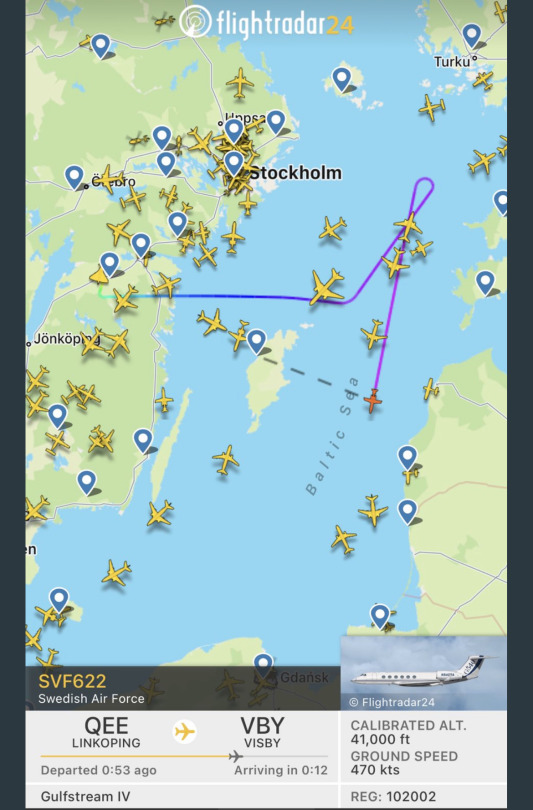
Another modified passenger aircraft that tends to hang out up in the Baltic Sea checking in on Kaliningrad. Sometimes these could just be passenger planes, but these tracks can be sus! And these planes can be easily modified.
-
🛩Northrop Grumman E-8 Joint Surveillance Target Attack Radar System (Joint STARS)
It also does a lot of things. Per wiki: it tracks ground vehicles and some aircraft, collects imagery, and relays tactical pictures to ground and air theater commanders.
-
🛩 Saab 340 AEWCS
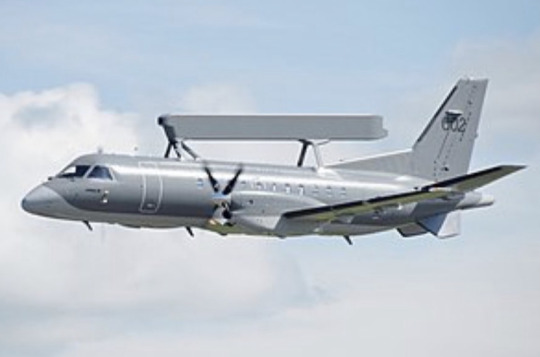
Swedish AEWCS plane. Funky lookin little dude. Similar to the Sentry, but with some limitations.
6 notes
·
View notes
Note
So we end up flattening Shagrat Airbase. Is there anything stopping Syria from sinking the Bush in response?
Well, lets see. Is there?

This is an Arleigh-Burke class destroyer. It’s a modern air-warfare destroyer, which means it’s mainly designed to carry a fuck-ton of anti-aircraft missiles, to shoot down aircraft, and incoming hostile anti-ship cruise missiles. Newer marks also carry two large helicopters, which make it a potent anti-submarine platform as well.
It does many things, but first and foremost it’s designed to protect the carrier.

This is a Ticonderoga-class cruiser. This ship is designed, from the keel-up, for one job, and one job only. It has more VLS cells than a Burke (a full 122 to a Burke’s 96,) but most importantly its increased size houses more computers and crew for operating the Aegis Combat System, a sophisticated computer network that links all the other ships in the fleet using it (such as Burkes, the carrier, any and all aircraft launched by ships or carrier, etc.,) and use that data to co-ordinate the sensors and weapons systems of every ship in the fleet to track and engage incoming targets. This floating command post’s Aegis system (Aegis = “shield” in ancient Greek) had its origins in the New Threat Upgrade systems first developed when rapidly advancing electronics tech in the early 80s was making cruise missiles smart enough that ECM couldn’t just make them do loop-de-loops. This is when missiles were first optimized not for engaging cruise missiles heading towards the launching ship, but for engaging missiles heading for other ships that were not them, by flying “lead” pursuits required to engage crossing targets, rather than the old and very inefficient/ineffective “lag” pursuits.
In short, the “one job” this ship is built to do is to protect another ship - the carrier.
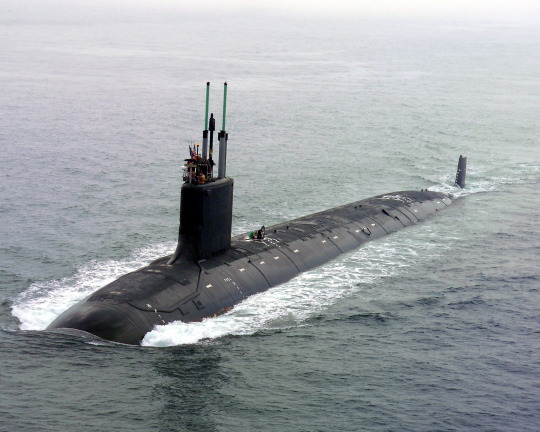
This is a nuclear-powered fast-attack submarine, a Virginia class. The second-best anti-submarine weapon in the world is an aircraft (commonly carried in large numbers by these things called aircraft carriers,) and the first one, is another submarine.
One of these accompanies every Carrier Battle Group. To protect the carrier.
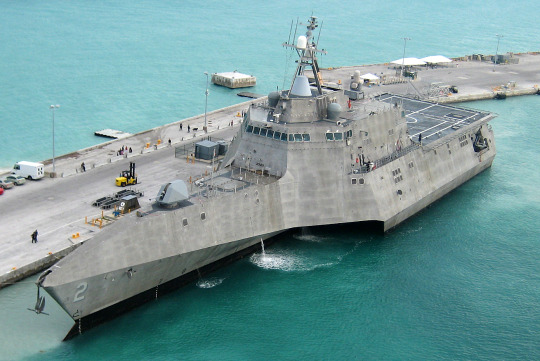
This is an Independence-class Littoral Combat Ship, which has been built to execute several different missions, but the primary and most important one is fending off swarms of small speedboats and other asymmetric threats in places like the Strait of Hormuz. It’s also highly capable as a modern anti-submarine warfare platform, with a towed VDS sonar and extensive ASW helicopter capacity.
In other words, it’s custom designed to fend off Iranian-style tactics when a carrier is transiting the Strait. This ship, too, defends the carrier.
Now lets talk missiles.

This is an SM-1 on the twin-arm launch rail. This could fire two Standard missiles at a time. This was far, far too few to fight off big swarms of cheap cruise missiles targeting some big, vulnerable ship, like, say, a carrier. The first Ticonderoga cruisers were armed with these, and were notable for having two, instead of just one like most escort ships, which made them more capable of protecting the carrier.
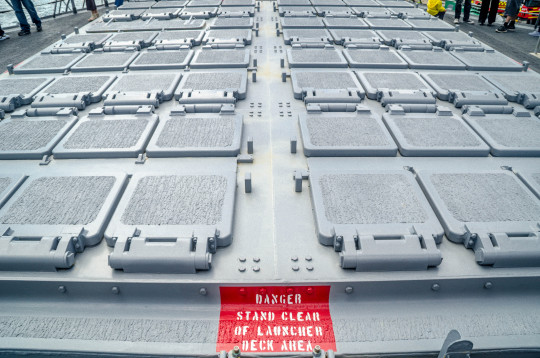
This is a Vertical Launch System, a design that allows the very rapid ripple-firing of many, many weapons at once, specifically to put weapons in the air to counter big saturation-attack swarms of incoming cruise missiles. The Aegis Combat System was designed to properly employ this weapon and the vast number of weapons it could fill the air with, specifically to counter the missile saturation attacks designed to overwhelm the defenses of the carrier.
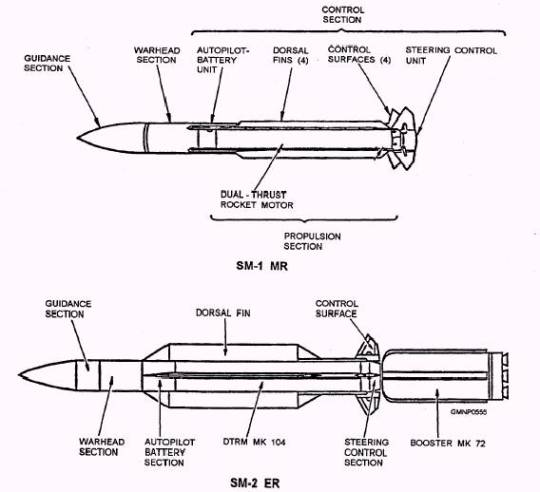
This shows an SM-1 (roughly similar to the modern SM-2, a much-upgraded development of it,) and the SM-2 ER, which adds a honking huge rocket booster to it to grant a lot more range. While an SM-2 reaches about 50 nautical miles or so, the SM-2 ER can reach out a staggering 130 nautical miles.
This increased standoff range is to make it easier to kill aircraft before they can launch missiles at the carrier.
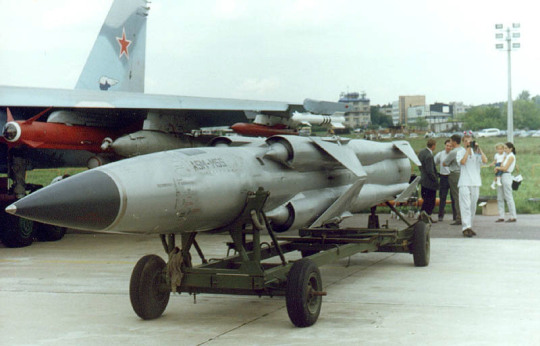
This is a supersonic sea-skimming anti-ship cruise missile known as the “Moskit,” one of a number of similar weapons that the Soviets intended to launch at NATO ships from Tu-22 Backfire bombers. The general idea of these massive weapons was simple - they had very long range, further than the SM-2ER above, so they could avoid the defenses of, and thus kill, the carrier.

This is an F-14 Tomcat, a swing-wing, high-speed fleet defense interceptor. The entire reason for this aircraft’s existence - and for the huge fucking missile it carried -
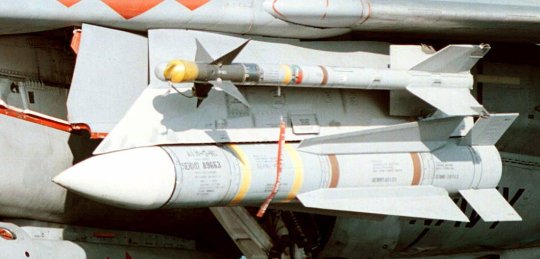
- with its 100 nautical mile range, was to hunt down and murder Backfire Bombers from even longer range. This aircraft and missile were literally made for and designed around each other; an entire, complete weapons system with just one job.
They protected the carrier.
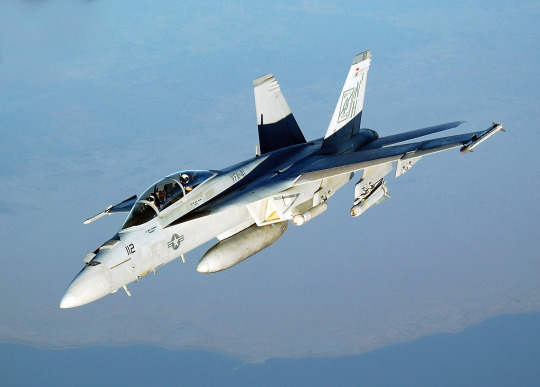
This is an F-18E Super Hornet. With the latest marks of the AIM-120D, which can reach almost 70 goddamn miles, it can pretty much do what the F-14 did, except at lower cost and more reliably because Technology. What it cannot do, the F-35 can, due to being able to get much closer before being detected, and that’s without the possible purchase of the British Meteor, a super-long-range missile that’d be an excellent replacement for the Phoenix - and is already slated for fielding with the British F-35. However, the F-18 as is can protect the carrier. It is good enough to protect the carrier.
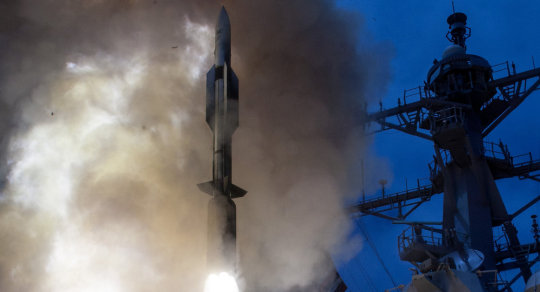
This is an SM-6. The Navy decided that “good enough” wasn’t good enough, so they took an SM-2, took out the guidance, and replaced it with a terrifying Terminator borg-brain equipped with the radar seeker of an AIM-120 so it can hunt down and murder targets autonomously, with no support from the launching ship. Combined with targeting data from an E2D Hawkeye AWACS aircraft (launched by a carrier) and routed through the Aegis combat system, this weapon can engage sea-skimming missiles well over the horizon.
This missile can also kill other ships and it can even shoot down ballistic missiles, but its main role is to protect the carrier.
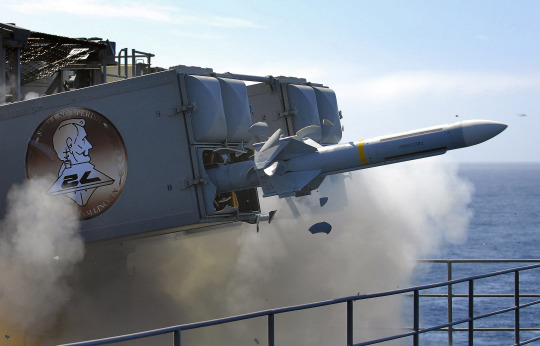
This is a RIM-7P Sea Sparrow. It’s basically an AIM-7 put onto a ship, where it worked much better than it ever did as an air-to-air weapon. It has a great reputation for reliability and accuracy, and is still in use by many NATO allied nations worldwide. It was commonly used as a point-defense weapon to protect the carrier.
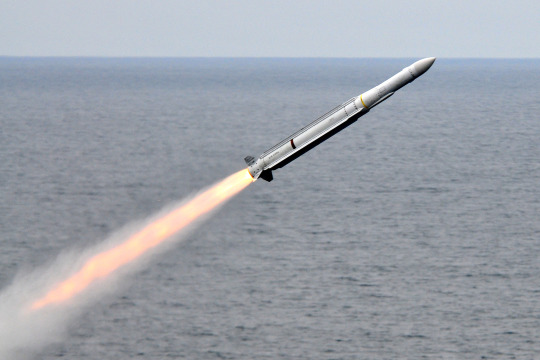
This is an “Evolved” Sea Sparrow, or ESSM, which has about as much in common with the original Sea Sparrow as ducks do with horses. It has more than double the range of the original (30+ nautical miles compared to 15 or so) which puts it closer to a medium-range SAM, but the US still considers it a point-defense weapon. It’s more accurate, can be packed 4 to the VLS cell, and is slated to receive an active radar seeker in a future upgrade.
This now arms the ships that protect the carrier.
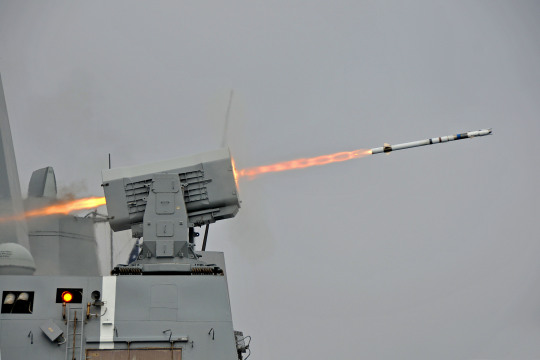
This is what the carriers themselves now use - the RIM-116 Rolling Airframe Missile. It has only slightly less range than the old Sea Sparrow, but makes up for it by getting to the target much faster, important for blowing them up far enough away to avoid damage and for giving you breathing room for follow-up shots if you want. Unlike a CIWS gun, like the Russians and almost everyone else still rely on for the last-ditch point defense, this thing can engage multiple targets at once, can hit targets at about ten times the effective range, is far lighter, and is much more accurate and reliable.
These are mounted on, or being retrofitted to, every carrier to protect them.
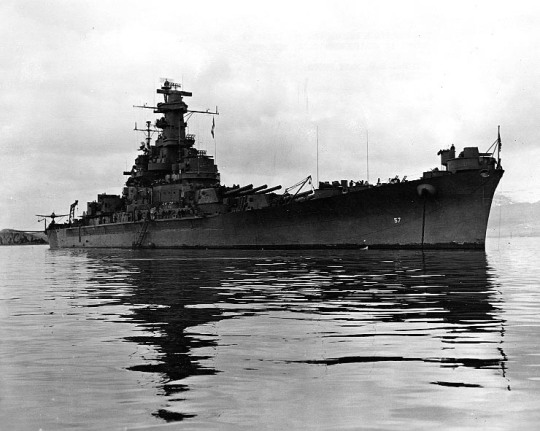
Now for a nine-gun blast from the past. This is the USS South Dakota, lead ship of her class. She displaced 35,000 tons and made 27 knots at maximum speed.

This is the USS Iowa, lead ship of her class. She’s basically the same design as the South Dakota above, but for two differences - she made 33 knots or so, and she weighed 45,000 tons.
Why would the Navy invest 10,000 tons more ship for a measly 6 knots increase in speed - especially when it didn’t make much difference in battleship combat?

This is why - the Iowa could keep up with the carriers, and by that point in the war, the only role for any ship that was not a carrier was usually protecting a carrier. This is the USS Midway, a WWII-construction carrier that served till the 80s.

This is the USS New Jersey on Nov. 8th, 1944, with the USS Hancock in the background, photographed from the USS Intrepid (another carrier.) The New Jersey is protecting the carriers.

This is the USS Iowa in the late 80s or early 90s. In this picture, she is leading a fleet of ships, and that fleet of ships is surrounding the ship they are there to protect, which is a carrier.
This picture can be confusing to the uninitiated, who have let their love of the majesty and engineering of a bygone era corrupt their understanding of the modern world, I have prepared a simple diagram to help you understand the kinds of ships present in this image:

So you see, anon, the thing stopping Syria from sinking the carrier is SEVENTY FUCKING YEARS OF NONSTOP OBSESSION WITH DOING NOTHING BUT PROTECTING THE FUCKING CARRIER.
Does that answer your question, anon?
52 notes
·
View notes
Text
Ace Combat 4: Shattered Skies Mobius 1 Memoirs The Northern Eye
Its been some time now and the initial fear of taking off has subsided a bit. I said my usual hi’s and bye’s to Omega 1 and Viper 1 and we boarded our jets. I saw the commander in person this time. It’s the second time I’ve seen him since he introduced himself to us. He isn't the one who briefs us and he was busy so I figured I shouldn’t disturb him and besides I had a mission to fulfill. Our allied forces are retreating and the survivors are gathering around St. Ark on the northern side. But the evac mission is in jeopardy due to the radar base on the top of Mt. Shezna delivering tactical support to the enemy. So as long as we destroy it we can blind the enemy. I hopped into a F-16C and we launched. We entered the combat area and the first thing that came into view were the enormous mountains. It was cloudy and intimidating but I shook off my nerves and continued when suddenly the commander spoke. <<AWACS>> “This combat area is within enemy airspace. Keep an eye out for bandits. Take vector 180 to return home after destroying the target. Remember, a safe return completes the mission. Cleared to engage” I turned on my afterburners and saw the first target rush up to me. I wasn’t as nervous as I was last time. I was confident to take them down without hesitating. I saw the distance close in rapidly as we flew closer and closer. It was something akin to a game of chicken. I shot my missiles and turned as they destroyed him head on. I saw the peak of the main mountain. <<RADAR>> “This is Shezna Radar 1. Bandits approaching at vector 135. Engage hostile aircraft and keep them from the radar.” The radar was based on the peak in several dome like buildings. I was careful so I didn’t fly nose first into the mountains trying to get close enough to lock on. I fired and pulled up. “Target destroyed by Mobius 1!” I let go a sigh of relief. I continued engaging target after target making loops and all types of maneuvers and then I found myself being memorized by the the scenery. It almost put me in a trance. “Radar do you read me?” said the enemy in a panicked voice. “Shezna Radar 1's gone silent!” said another angrily. I moved to the next cluster of targets when I saw the huge crater I was flying over. “Mobius 1 passing over Krasinsky Crater.” the commander announced. I eased on the afterburners again to gain some speed. <<AWACS>> “Radar Base 2 at vector 260, 8 miles.”
I came in fast with the distance closing very quickly coming closer to the second radar base. I fired and banked hard so I didn’t catch a face full of snowy mountain. I barely made it. I could feel my heart beating quickly because of how close I got to the ground. I pulled myself together and made short work of the other 3 radar domes and was greeted with a siren like noise informing me of a mission update. “The radar’s destroyed!” the enemy said with panic and fear. “Fighter squadron here, mission accomplished.” announced Viper 1. <<AWACS>> “SkyEye here, radar facilities confirmed destroyed. All aircraft take vector 180 south. Use the return line on the map to exit the combat area and return to base. Fly in the right direction an you’ll see a white dotted line across your flight path. Those of you who need to resupply or refuel during missions should cross this line to exit the combat area, and return to base or carrier. I turned around and headed towards base at full speed. It took a few minutes to get there but at least it was a nice view of the mountains. I saw the dotted line on the map and crossed it. <<AWACS>> “Approaching return line. Follow the controller’s orders for landing.” The landing process is always tough no matter where or who you are because one wrong move could end your life. I concentrated and heeded the controllers orders and began landing procedures. I was sure they’d help me land just fine. <<AIRBASE>> “Mobius 1, perform landing check. You are cleared to land” I reduced speed and narrowed my eyes and listened closely. <<AIRBASE>> “2 miles to touchdown.” I made adjustment after adjustment managing all of my movements piece by piece. <<AIRBASE>> “1 mile to touchdown.”
I began to drop my altitude ever so slightly and fix my positioning. <<AIRBASE>> “You’re on the money.” This was it, I touched down and heard my tires screech on the pavement and slowed down as much as I could until I came to a complete stop. Mission accomplished. <<AIRBASE>> “Nicely done Mobius 1. Go and prepare for your next sortie.” What an ordeal landing always is, but I was glad I had my life still and I could enjoy it for another day. I walked off the runway with a smile on my face.
1 note
·
View note
Text

IMAGES: USAF this time performs a "Mammoth Walk"
Fernando Valduga By Fernando Valduga 06/08/2023 - 18:02 in Military, War Zones
The U.S. Air Force's most recent "Elephant Walk" was so impressive that the U.S. officially called it the "Mammoth Walk", or Mammoth Walk.
On May 5, 57 subordinate aircraft of the 7ª U.S. Air Force from the bases of Osan and Kunsan, where the 51ª and 8ª Air Wings are stationed, respectively, were aligned at Osan Air Base, South Korea.

There were on the runway forty F-16C/D Fighting Falcons of the 35º, 36º and 80º Fighter Squadrons, twelve A-10C Thunderbolt II attack jets of the 25º Fighter Squadron, two U-2S Dragon Ladys spy planes of the 5º Reconnaissance Squadron and three C-12 Hurons transport turboprops from the 2ª
youtube
The F-16 and A-10 aircraft shown in the photos were armed with real missiles and bombs of various types, such as AIM-9 and AIM-120 for air combat, AGM-65 to attack ground targets and AGM-88 HARM for anti-radar, and GBU-38, GBU-54, GBU-31 and GBU-31(V)3 (Pilantogi

Some F-16s have also been equipped with the HARM system, which is rare in the Block 40 versions, but allows them to perform SEAD (anti-aircraft defense) missions such as the Block 50 versions, which are usually designed for this.

With the exercise, the United States of America impressively emphasized its commitment to the Indo-Pacific region. The presence of its air forces in South Korea should contribute to the stability of the region. Osan is the closest air base to communist North Korea.
Since World War II, the "Elephant Walk" has been a constant term in the U.S. Air Force. The Army Air Forces had a large number of bombers available in 1944, with which the U.S. regularly flew attacks with more than 1,000 aircraft. For this, the heavy planes rolled to take off in long rows one after the other. The image resembled the march of heavy elephants on their way to the next water point, the USAF statements described. The term remained and even entered the USAF regulations and since then, the Elephant Walk has been the official expression of an exercise with a maximum number of aircraft.

In elephant marches, the machines roll one after the other on the track. In their simple variant, they occur as a rolling exercise without takeoffs and subsequent landings. With the exercise, the air forces regularly check all aspects of a squadron's readiness to fulfill its war mission. "Correct" Elephant Walks end with the departure of all participating machines. Each aircraft capable of flying and ready for use and each crew must comply with the starting window of the war plan.

The recent "Mammoth Walk" at Osan Air Base was impressive, among other things, due to the wide variety of participating aircraft types - from twin-engine turboprop connecting planes to high-altitude reconnaissance jets. One of the largest Elephant Walks in number, on the other hand, is one that occurred in the 1980s, when 120 F-111 bomber fighters took off in less than an hour as part of Operation Desert Storm of 2003.
Tags: Military AviationElephant WalkUSAF - United States Air Force / U.S. Air ForceWar Zones - Korean peninsula
Fernando Valduga
Fernando Valduga
Aviation photographer and pilot since 1992, has participated in several events and air operations, such as Cruzex, AirVenture, Daytona Airshow and FIDAE. He has works published in specialized aviation magazines in Brazil and abroad. Uses Canon equipment during his photographic work around the world of aviation.
Related news
MILITARY
Kongsberg receives $65 million to upgrade Norwegian F-16 jets to Romania
09/06/2023 - 16:00
MILITARY
Turkish unmanned fighter Kizilelma completes flight tests and series production begins in 2024
06/09/2023 - 14:00
ARMAMENTOS
VIDEO: IRIS-T air-to-air missile is integrated into the South Korean KF-21 jet
06/09/2023 - 1:00 PM
The U.S. Air Force returned the first Boeing E-767 AWACS to the Japan Air Self-Defense Force after its modernization. (Photo: U.S. Air Force)
MILITARY
First E-767 AWACS delivered to JASDF after modernization
06/09/2023 - 12:00 PM
MILITARY
Germany refuses to deliver Taurus missiles to Ukraine
06/09/2023 - 11:00
AIR SHOWS
Egypt will host its first air show in 2024
06/09/2023 - 09:00
homeMain PageEditorialsINFORMATIONeventsCooperateSpecialitiesadvertiseabout
Cavok Brazil - Digital Tchê Web Creation
Commercial
Executive
Helicopters
HISTORY
Military
Brazilian Air Force
Space
Specialities
Cavok Brazil - Digital Tchê Web Creation
5 notes
·
View notes
Text

See how was the secret mission that made Joe Biden arrive in Ukraine without Air Force One
Surprisingly, the U.S. president visited the Ukrainian capital, Kiev. For the last part of the trip, Joe Biden renounced plane transport.
Fernando Valduga By Fernando Valduga 02/21/2013 - 12:40 PM in Military, War Zones
The world was surprised on Monday (20/02) when U.S. President Joe Biden visited Kiev, Ukraine, for the first time since the beginning of the war, almost a year ago. Biden did not land at Kiev airport, arriving in the Ukrainian capital through a well-planned operation and executed in a few hours.
Biden did not fly to Kyiv-Boryspil Airport or any of the other airports in or around the Ukrainian capital because he is very risky in the country that has been covered by the war by Russia for almost a year.

According to several news agencies, Biden took off from Andrews Joint Air Base, southeastern Washington with a Boeing C-32 at 04:15 local time, on February 19 - with the so-called "SAM060" (SAM for Special Air Mission) instead of the usual "Air Force One".
In addition to the employees on board the modified 757, there were only a few journalists selected on board who previously had to deliver their mobile phones. They were informed on Friday and instructed to wait for details on Saturday, with the subject: "Arrival instructions for the golf tournament".

They were instructed to arrive at Andrews air base at 2:15 a.m. local time on Sunday. Both were prohibited from reporting any details for 24 hours.

Several hours before Biden's visit, the sky over Poland was visited by two U.S. Air Force AWACS E-3B Sentry jets and a single Boeing RC-135W 'Rivet Joint' signal intelligence (SIGINT) aircraft. Routine air traffic scanning can easily be interpreted as preparations for the announced visit of the President of the U.S. (POTUS) to Poland, which was announced to take place between February 21 and 22.

A whole series of aircraft is available to the U.S. government. At the Munich security conference last weekend, Vice President Kamala Harris and her delegation traveled with two jets - a Boeing C-32 and a Boeing C-40 Clipper, a military version of the 737-700.

U.S. President Joe Biden on the right and his national security advisor Jake Sullivan on board the train to Kiev. (Photo: AP/ Evan Vucci)
The flight made a stop to refuel after about seven hours in Ramstein, Germany, then landing at Rzeszow-Jesionka airport in Poland, at 7:57 p.m. local time. From there, Biden drove in a car convoy to Przemysl Glówny, where he got on a train that took him to Kiev on a trip that lasted It is the same route used to transport large amounts of aid and hundreds of thousands of refugees going in the opposite direction.

U.S. President Joe Biden after arriving by train in Kiev. (Photo: AP/Evan Vucci)
The train arrived around 8 a.m. in Kiev, where Biden met Ukrainian President Volodymyr Zelenskyy.
On the morning of February 20, Kiev was surprisingly quiet. Public transport was partially interrupted in the city center and public spaces released.
Finally, around 12 p.m. local time, the first filming of President Joe Biden leaving the monastery of São Miguel along with President Volodymyr Zelensky was published on social networks.
Zelensky and Biden honored the Ukrainian soldiers killed during the conflict, since operations in Donbass in 2014, at St. Michael's Monastery and took a short tour of the city.
The leaders held a joint press conference where strong words were shared by Biden condemning the Russian aggression and emphasizing Western solidarity with Ukraine. Biden said:
"When Putin launched his invasion almost a year ago, he thought that Ukraine was weak and the West was divided. He thought he could survive us. But he was completely wrong.

President Joe Biden leaves Air Force One upon arriving at a military airport in Warsaw, Poland, Monday, February 20, 2023. (Photo: AP Photo/Evan Vucci)
The visit also announced promises of delivery of new equipment totaling US$ 500 million. The U.S. will provide more artillery equipment along with HIMARS ammunition and new sanctions will also be imposed on individuals and companies still operating in Russia, supporting their invasion of Ukraine. Biden also announced other “critical equipment”, including anti-shielded systems and air surveillance radars. But no combat jets yet.
The media audience was only allowed to make the itinerary public when Biden had already left again - again by railroad towards Poland. On the night of the 20th, Biden landed in Warsaw with the C-32 aircraft.
The White House national security consultant told the American media that Russia was informed “some hours” before Biden’s trip to Kiev. This was done "to mitigate the situation". He did not go into detail about how accurate or vague the information was and how Moscow reacted.

Overview of a Boeing C-32 Air Force One aircraft at Jasionka Airport, Poland, on February 20, 2023. (Photo: Patryk Ogorzalek/Agencja Wyborcza.pl via REUTERS)
POTUS' visit to Ukraine signals the West's continued support for Kiev. With the official statement of the White House noting that “last year, the United States built a coalition of nations from the Atlantic to the Pacific to help defend Ukraine with unprecedented military, economic and humanitarian support – and that support will last.”
Tags: Military AviationC-32AUSAF - United States Air Force / US Air ForceWar Zones - Russia/Ukraine
Fernando Valduga
Fernando Valduga
Aviation photographer and pilot since 1992, he participated in several events and air operations, such as Cruzex, AirVenture, Dayton Airshow and FIDAE. He has works published in specialized aviation magazines in Brazil and abroad. He uses Canon equipment during his photographic work in the world of aviation.
Related news
MILITARY
Black Hawk now flies in Ukraine
21/02/2023 - 18:00
MILITARY
Leonardo and WZL1 close agreement for long-term support of the Polish fleet M-346 “Bielik”
21/02/2023 - 16:00
HELICOPTERS
Bell completes deliveries of Bahrain's AH-1Z helicopters
21/02/2023 - 15:26
MILITARY
Saab offers GlobalEye to replace NATO's E-3 Sentry
21/02/2023 - 11:20
MILITARY
Iran reveals plan to turn its "sneaky hoo" into an unmanned aircraft
21/02/2023 - 10:24
Illustrative image of one of the balloons sighted in Japan last year. In detail, ACARS warning to pilots flying in the region and Delta flight route that recorded the enlistment of the balloon in Hawaii.
MILITARY
Balloon sightings continue... now near Hawaii
20/02/2023 - 20:56
homeMain PageEditorialsINFORMATIONeventsCooperateSpecialitiesadvertiseabout
Cavok Brazil - Digital Tchê Web Creation
Commercial
Executive
Helicopters
HISTORY
Military
Brazilian Air Force
Space
Specialities
Cavok Brazil - Digital Tchê Web Creation
2 notes
·
View notes
Note
Do you think them Norks really have anything they could use to try and shoot down US bombers, even in international airspace like they said they would?
Well, I did promise to cover this in more detail while tweeting about it, so here goes. The two systems they have that could pose a threat to US strategic bombers are the SA-5 (S-200, in Russian parlance) and their own domestic SAM, the KN-06.
The SA-5 is a truly massive weapon, and that gives it impressive kinematic performance even today - it’s capable of a nominal 190nm range. It was in fact purpose-built to engage US strategic bombers, and technically speaking it could shoot down an SR-71; if an SR-71′s jammers all broke and it was stupid enough to fly foolishly close to one. A lot of nations (including Syria) still own and operate these systems, because they provide a range and performance that hasn’t been rivaled since but by the S-400/SA-21, and Russia’s not selling their latest greatest toy around just yet.
Given the compactness of the Korean peninsula this means the SA-5 is capable of threatening aircraft over much of South Korea - especially airliners, AWACS aircraft, and anything else big, slow and vulnerable, like the bombers it was meant to engage. Fortunately the incredibly dated and compromised system (former Soviet bloc operators that have since joined NATO have been very forthcoming,) means it’s pretty helpless against modern jammers... if the operators make no attempt to upgrade.
I’ve mentioned the many upgrades and hybridization upgrades to old Soviet-era systems made either by individual operating nations or offered by the original Russian manufacturers as part of their arms-peddling economy. The SA-5 is no exception to this. Worse, the upgrade is dead simple compared to many others. The SA-5 is a semi-active guided weapon, with the illuminating “Square Pair” radar operating in Continuous Wave mode (simple, powerful and hard to jam; a pure beam of radio energy,) to illuminate targets. Unlike most SAMs, the SA-5 was more like the modern Patriot, with one radar providing target acquisition, tracking, and target engagement. (The Patriot radar can also provide the area/volume early-warning search, whereas the SA-5 would rely on the usual Russian early-warning radars.) “Target acquisition and tracking” refers to getting a perfect fix on a target - early-warning radars can detect an aircraft and even narrow its position to a narrow location in the sky, but target acquisition refers to focusing a much greater amount of power onto that contact to fix its position in the sky down to the millimeter - and once that’s done, tracking it to determine its trajectory from second-to-second. This is mandatory to point an illumination beam at the target - it’s a relatively small target and it’s over a hundred miles away, after all.
The SA-5 “upgrade” just uses a brand-spanking new Flap Lid, Tomb Stone or Grave Stone radars from Russia’s much more modern S-300/400 family of SAMs to do early warning, target acquisition and target tracking, using the Square Pair radar as a target illumination only, an arrangement common to many SAM systems. This is significant because it’s not a terribly huge change to the system; it’s not replacing one radar wholesale with another, it’s not making big changes to the weapon’s electronics, or any of that - and since some new equipment’s needed to interface the new radar with the Square Pair (the Square Pair becoming a slave to the new one,) and since modern electronics are so small and cheap compared to 1960s tech, the upgrade could quite cheaply and efficiently replace the entire four-trailer command-and-control apparatus of the SA-5, which is a big boost to reliability and ease of use. (Don’t underestimate that last part - properly using equipment like this isn’t easy at the best of times, much less for secondhand operators without careful schooling of Soviet teachers to count on anymore.) We can - must - assume the North Koreans have this radar and associated upgrades, given recent Russian support.
However, even with all that accounted for, we’re probably safe. For starters, these upgraded systems have been fired at us, with little notable effect. Russia kindly repaired some SA-5 batteries for their Syrian buddies that’d been lying around broken, in want of original vendor support. Whether or not they were upgraded can’t be said, but I’d wager they were, considering Russia has a vested interest in keeping unhappy people with bombs and a willingness to drop them on Iranians (i.e. Israelis) from mucking about in Syrian airspace. It’s a moot point however, because their own S-400 and S-300VM systems deployed there have been unable to stop repeated Israeli airstrikes, including the two recent ones and the famous incident a few months back where an SA-5 that’d missed its target and gone ballistic was auto-engaged by the Israeli Arrow ABM system.
In addition to that, there’s the basic distances and capabilities to consider. The Norks have four SA-5 batteries, doubled up on two hardened sites - one on their east coast, and one on the west. With cruise missiles and such, our B1-Bs and B-52s have absolutely no need to get within 100nm of their coastline to engage pretty much anything, and for practical purposes they won’t fly too close if they’re just strutting their stuff and not flying a combat sortie with warshots. In either case that distance plays in our favor - and when you consider that we’ve got Marine Growlers based at Iwakuni to provide jamming support, and Compass Calls based in South Korea, and MALD-Js to provide close-in jamming and MALDs that can emulate any target signature - including that of big bombers - chances are absolutely excellent that even the modern Russian radars aren’t going to be holding a combat track at extended ranges. These systems were built to defeat those exact radars, remember, and at those longer ranges they’ll probably pull it off.
And then there’s the hard kinetic counter to consider. The SA-5 sites are impressively hardened, with both the Square Pair radars and the launch rails for the Gammons capable of retracting into hardened concrete bunkers. Sadly for the Norks, we’ve a vast proliferation of bunker-busting warheads and the means to deliver them, so that’s not much defense - a pair of F-22s loitering 30nm off the coast will be both undetected and capable of ruining those lovely radars with SDB strikes in short order. But kinetic counterstrike is an even better option - F-15Es or F-18s or even Growlers some 50nm off the coast, between the bombers and the SA-5 site, would be able to engage with supersonic HARMs the instant they detect CW illumination radiating from the site. The HARMs will win that race. Even if the North Koreans retract their radars safe and snug into their bunkers, it’ll terminate the engagement, the unguided missile will plop into the sea, and the bombers will be mailing that site a Sternly Worded JASSM in short order.
Then of course, there’s the KN-06. This is a new domestic-built weapon that’s lightyears ahead of the DPRKs legacy Soviet systems... but from all accounts, it’s roughly equivalent to an S-300 (SA-10 Grumble) with a rather better range (60-90, compared to a Grumble’s 40-60.) It’s a modern, quick-deploying, road-mobile weapon though, which makes it infinitely better than the static Soviet-era trash the DPRK relies on right now... but sadly for them, it’s pretty new. They only trotted it out for demonstrations last year, so they’re unlikely to have many of these yet - maybe two batteries, right now. A few more, if we’re playing pessimist. These weapons are much more capable, in all likelihood, but they really don’t have the range to oppose strategic bombers - the JASSM can go 200 nautical miles, and the JASSM-ER, 400+. Weapons like that were designed to give the B1-B and B-52 standoff ability to evade weapons like the SA-5 when they first came out - against stuff like that, the KN-06 - and it’s unknown, untested ability to engage missiles - and the stealth characteristics of the JASSM - and the general poor, easily-jammed state of North Korea’s EW network - well... no. They’ll be hard pressed to mount a credible defense of their own airspace - they certainly can’t threaten our strategic bombers.
And then there’s the North Korean’s interceptor fighters which are... suicidal. It’s amazing those assholes can take off and land again in one piece, with the flight training hours they get a year. Sending them into combat against US escort planes would be suicidal.
0 notes